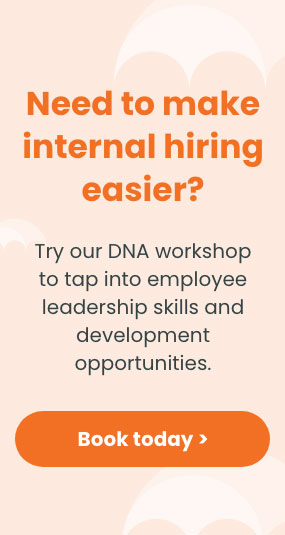Perfecting the recruitment process is one of the most important functions for a company to get right. With its talent being a business’ most valuable asset, ensuring that the best hires are made for each role is key to the success of the company and retention of employees. In the same way that using skills tests can improve recruitment outcomes, implementing the correct hiring framework is another factor which can impact this.
While there is no one-size-fits-all recruitment process that works best for every type of business, many organisations will use one of these two hiring models: decentralised or centralised. Understanding the differences between them is therefore the first step towards selecting which recruitment strategy is best for your company.
What is decentralised recruitment?
In a decentralised system, the decision-making regarding new hires is delegated to each individual branch or division of an organisation. The responsibility for recruiting new employees therefore falls to specific managers based on either geography or department, rather than a company-wide Human Resources team. Retail companies are an example of businesses that hire in this way, though only around 15% of all businesses recruit using a fully decentralised model.
What is centralised recruitment?
With centralised recruitment, all staff pass through a central HR office which uses a single hiring system. This means that the recruiters all follow the same procedures and ensures that there is consistency in both the methods and values applied to decisions. About 50% of companies have centralised hiring systems, commercial banks being a good example.
Advantages and disadvantages of a decentralised model
Decentralised recruitment has many advantages. It allows for greater freedom in hiring strategy as the manager can select candidates according to the specific needs of their team. For businesses that operate in many different locations this is particularly useful, as recruitment policies can be tailored to the local socio-cultural needs. This flexibility can also help predict job performance better than a standardised system; rather than assessing all applicants in a ‘catch-all’ fashion, the division can use skills tests which target the specific job requirements and even create a bespoke test customised to its own needs. Additionally, decentralisation can facilitate a closer working relationship between the staff and management as hiring mangers have a more personal involvement in the selection of candidates.
However, there are downsides to this method. Giving managers the time-consuming task of recruitment can disrupt their work and distract them from their main responsibilities within the business, impacting productivity and inflating staffing costs. In addition to this, the inconsistency between branches’ approaches could result in differing standards being applied to candidates all within the same company, causing a problematic lack of equity.
Advantages and disadvantages of a centralised model
The more popular centralised strategy offers a contrasting set of advantages to a business. As discussed in our previous blog post, unconscious bias is a highly negative yet unfortunately pervasive aspect of much recruitment. This model is far more conducive to unbiased recruitment, because by standardising the process across the board, centralisation offers equal opportunities to all candidates. Skills tests are particularly useful in this regard; as well being tools for narrowing down the larger pool of applicants, they can ensure that the candidates in question are selected based on their skills alone. From a financial perspective, too, this staffing system is preferable; having a dedicated HR team means that fewer hirers are needed across the company and makes it more cost-effective and time efficient, as well as enabling line managers to concentrate on their own duties. Centralising all hiring in this way can also be beneficial for large businesses as it allows for candidates to be placed or transferred wherever is most appropriate. In the past, centralisation may have posed a logistical challenge in terms of candidates and their geographical distance from the central office, however advancements such as realistic job previews and video interview services can aid a company's talent acquisition regardless of proximity (something recruiters have found particularly useful during Covid-19).
Centralisation also has its disadvantages, though. An HR office may lack a sufficient understanding of local markets, leading to misjudged hiring decisions, and the rigidity of a centralised process can seriously impact the diversity of a business. Additionally, while centralisation can help in terms of employee placement, it is far from ideal for multinational companies that hire in a range of countries and economies.
Deciding whether to decentralise or centralise the way in which your business recruits staff therefore depends on your company’s priorities, and many actually use a hybrid model which combines elements of the two strategies. In this system, recruiters are spread across departments and locations yet the process is still overseen by HR. Consider the size, geographical diversity and values of your organisation to select the right model of recruitment for your company.




__-_28de80_-_b7d124a686df2d7b441e1bc07c4838352768768d.jpg)